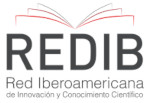A DREAM MADE OF LINES: WEAVING MEANINGS ABOUT FEMALE PROTAGONISM
tecendo sentidos sobre o protagonismo feminino
Keywords:
A Dream Made of Threads, Female character, Reader development, Picture book, Women’s writingAbstract
This study analyzes the work A Dream Made of Threads by Ana Carolina Carvalho, which stands out for its detailed descriptions of settings and the recurring presence of threads and lines woven throughout the plot. The embroideries serve as a starting point for sensitive discussions about the threads that allow us to stitch together life and encounters, weaving stories and representative figures. In the city "full of silences," as described by the narrator, the dreaming girl also creates plots rich in imagination and invites the exploration of spaces, characters, and their representations. In this exploration, we consider the female figure as a central axis of the narrative, emerging amid the metaphor of threads of dreams and silences as an element that sensitively contributes to the humanization and formation of literary readers. Given this context, the objective of the study is to discuss the composition and possible meanings of the picturebook. Methodologically, this is an analytical study based on theoretical frameworks related to children's literature, the visual dimension of language, and the relationship between verbal and visual language. We highlight the representativeness of the work and its elements—especially the female protagonist—understanding her contribution to the humanization and development of readers through the reflection enabled by the encounter with these elements. Word and image broaden the polysemic meanings of the narrative and poetically help the reader to reassess stereotypes, representations, and reflect on them and on feelings.
Downloads
References
BARTHES, Roland. Aula: aula inaugural da cadeira de semiologia literária do Colégio de França, pronunciada dia 7 de janeiro de 1977. São Paulo: Cultrix, 2007.
CANDIDO, Antonio. Direito à literatura. In: CANDIDO, Antonio. Vários escritos. São Paulo: Ouro sobre azul, 2011. p. 169-191.
CARVALHO, Ana Carolina; VIEIRA, Andréia. Um sonho feito de linhas. São Paulo: Edições SM, 2020.
COELHO, Nelly. Literatura infantil. Teoria, Análise, Didática. São Paulo: Moderna, 2000.
DONDIS, Donis. A sintaxe da linguagem visual. São Paulo: Martins Fontes, 1997.
MUNHOZ, Estela Maria Bortoncello; RAMOS, Flávia Brocchetto. Livro ilustrado: da composição ao sentido. Revista Desenredo, 19(1), 2023. https://doi.org/10.5335/rdes.v19i1.14197
MUNHOZ, Estela Maria Bortoncello. Enlace entre imagem e palavra: o livro ilustrado criado por mulheres. Dissertação de Mestrado. Caxias do Sul: UCS, 2022.
NEITZEL, Adair de Aguiar; RAMOS, Flávia Brocchetto. A leitura do literário como experiência artística e estética. In: CARVALHO, Mário de Faria; BRACCHI, Daniela Nery; PAIVA, André Luiz dos Santos (org.). Estéticas dissidentes e educação. São Paulo: Pimental Cultural, 2022. p. 21-41.
OLIVEIRA, Rui de. Pelos jardins Boboli: reflexões sobre a arte de ilustrar livros para crianças e jovens. Rio de Janeiro: Nova Fronteira, 2008.
PETIT, Michèle. Leituras: do espaço íntimo ao espaço público. São Paulo: Editora 34, 2013.
PETIT, Michèle. Ler o mundo: experiências de transmissão cultural nos dias de hoje. São Paulo: Editora 34, 2019.
Autor, 2010.
RAMOS, Flávia Brocchetto; PANOZZO, Neiva Senaide Petry. Literatura infantil contemporânea: o passado (revestido) bate à porta. Estud. Lit. Bras. Contemp. (36), Jul-Dez 2010.
WOOLF, Virginia. Um teto todo seu. São Paulo: Tordesilhas, 2014.
ZILBERMAN, Regina. Como e por que ler a literatura infantil brasileira. Rio de Janeiro: Objetiva, 2005.










